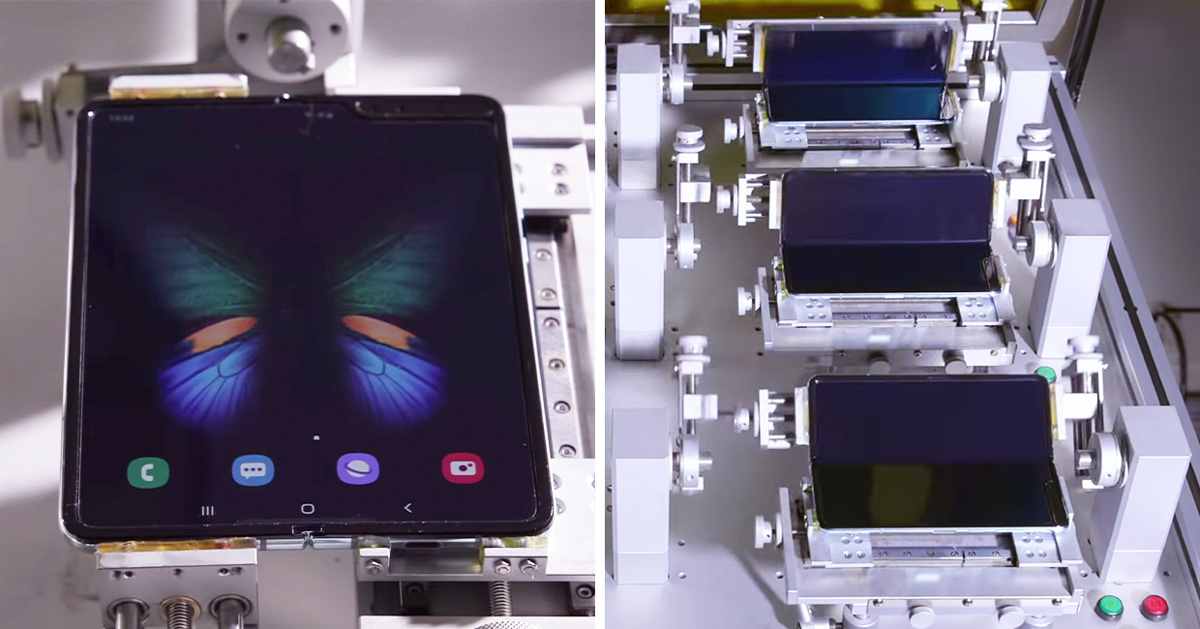foldable screen
Introduction

With the arrival of foldable screen technology, there is a new era of innovation in the mobile device industry, which has completely altered how users interact with their gadgets. The new technology enables the screens to be bendable and foldable without compromising on its functions; hence redefining the limits of gadget design, thus allowing smartphones and tablets to have larger display area with mobility preserved. The foldable screen idea is taking shape, and soon it would be a big thing not just in mobile devices like cellphones but also in other electronics including laptops, wearables and even bigger displays. This article discusses five key drivers behind the adoption of foldable screen technology and its future direction paying attention to versatility in gadgets, endurance to extreme conditions, customer experience, market patterns as well as probable challenges posed by such Technology.
Versatility and Enhanced User Experience

Foldable screen technology has one of the best benefits you can want. Foldable gadgets offer an exquisite mix of move ability and wide screen real estate, especially in today’s mobile world. For instance, when hitting the road for brief errands or going out into town for a while it is possible to use a folded phone as it can easily fit inside any purse or pocket. On transformation into a bigger version, its productivity goes up making it more appropriate for such things as playing games, streaming videos or reading texts than any other small device with good formatting option. The major advantage is that you can have your tablet or a smartphone all in one without carrying too many things. Moreover, this advanced software system enables contents and interfaces to switch automatically so that the users get smoothest and most intuitive experience ever. This choice of scenarios is among the factors fuelling interest in foldable screens by clients making heavier demands on their portable devices.
Durability and Material Innovation

The focus on durability during the creation of foldable displays has been paramount because these devices face many challenges when it comes to making layouts that can stand repeated bending without being destroyed. Earlier types received negative comments for having fragile panels plus hinges defective after a short time of usage however strides have been made towards tackling such issues by various companies involved in phone making. For instance; innovative materials like ultra-thin glass or custom-engineered polymers are currently used instead of previous ones which were less resilient yet more rigid in case of bending them into any other shape. In addition, better hinge designs have been developed that can withstand repeated stress associated with folding. Furthermore, scratches and other types of damages have been minimized on folding screens thanks to the introduction of protective coatings plus layers integrated within them. With these developments it follows that not only do foldable devices last longer but also eventually increase consumer trust towards this technology. As durability improves foldable displays will likely become popular options for a wide range of customers including those who are often hesitant towards utilizing newer technology platforms.
Impact on Market Trends and Consumer Preferences

Foldable screens were introduced into the market with changes that can be distinguished like why people opt for products and companies reasons to market technology. At first, it was thought that they would only serve a few people who loved new ideas in phone making. However, as time passed by it became evident that consumers were getting attracted with this new concept which seemed to be improving in terms of its functionality. A slight adaptation process may take place here; for instance, if you look at major manufacturers like Samsung and Motorola who are trying to bring down the prices of their products (foldable), then you will understand what I mean. By investing so much money in these projects they seek both technological improvement and an extension of possibilities for acquiring them. Due to fierce competition between producers more complex designs emerge on the one hand and on the other hand their marketing strategies are also differentiated aimed at wider base of consumers (by price-level) folding into themselves always sophisticated details making them sound universal yet specific enough to be loved by everyone who touched them (regardless of age, sex etc.).In addition to that increased use cases for foldable screen devices are pushing limits further within various spheres such as software development or anything else connected with creative industry because innovations cross-cut themselves these days. Thus, if people continue demanding ever more versatile but powerful mobile gadgets then eventually all phones will possess this trait along all lines.
Challenges and Technological Hurdles

We should start seeing foldable technology making an entry into the mainstream market. However, there are several challenges that need to be addressed before foldable screens can achieve mainstream acceptance Traditional cell phones and tablets are far cheaper than foldable devices that come with complicated production processes and high-quality raw materials. Therefore, it is hard for many buyers especially those living in price sensitive areas to afford these gadgets. Software optimization on the other hand is another issue at play. The hardware has seen better days but software such as apps and operating systems especially when it comes to their sizes have not caught up yet with this development. It remains a challenge for programmers to design user interfaces that enable smooth changing among different folding angles all while ensuring usability and convenience. Plus, big screens need more power; plus if they run heavy tasks then batteries do not last long. Certain manufacturers are thinking about using faster chips or bigger batteries; however achieving power efficiency without losing performance remains difficult. Finally there’s no certainty about how long foldable displays will survive because aging is an issue among consumers. As a result, users must weigh these issues carefully
Future Prospects and Innovations

Going forward, more innovations are already being lined up for the foldable screen technology and its popularity and usability are likely to increase in the coming years exponentially. One of the most expected novelties is a combination of rollable and stretchable screens, although it may bring an even higher level of flexibility. For example, rollable screens can enable device displays to be even longer than they are now, without folding, while stretchable screens may open entirely new form factors. Further, with the ongoing improvements in 5G and beyond, foldable devices will be supported with better and more stable connections that are crucial in utilization of the larger screen size and better multitasking. The integration of foldable with augmented reality (AR) and artificial intelligence (AI) may also mean new exciting apps and interactions in the future. Gradually with the progress in research and development in this field, foldable screen is likely to be further enhanced in terms of performance, costs, and applied to a range of applications such as smart phones and tablets, laptops, wearable electronics, home appliances etc.
Conclusion
Flexible screen technology is that revolutionary advancement that brought and is expected to revolutionize the future of portable devices and the world beyond. The concept of portability with large screen sizes is something that the G Pad brings to market that cannot really be matched by iPad due to the Android button layout. Nevertheless, there are some concerns that have to do with the long lifetime of the materials involved, the cost of their applications, and the efficiency of the software; nonetheless, the latter is gradually being conquered through the improvements in material and design. In the light of emerging trends in the market and the increased demand for multi-functioned devices, it is prognostic ally safe to predict that the foldable screen technology will be a norm in the near future. The future seems to be bright for improvement of foldable screen and there are new possibilities of form factors and technologies that will be empowering the foldable screen. In this process, the foldable screens are set to become one of the key elements in defining the further evolution of the mobile devices where flexibility and versatility are guaranteed to become the defining factors for the consumer.

